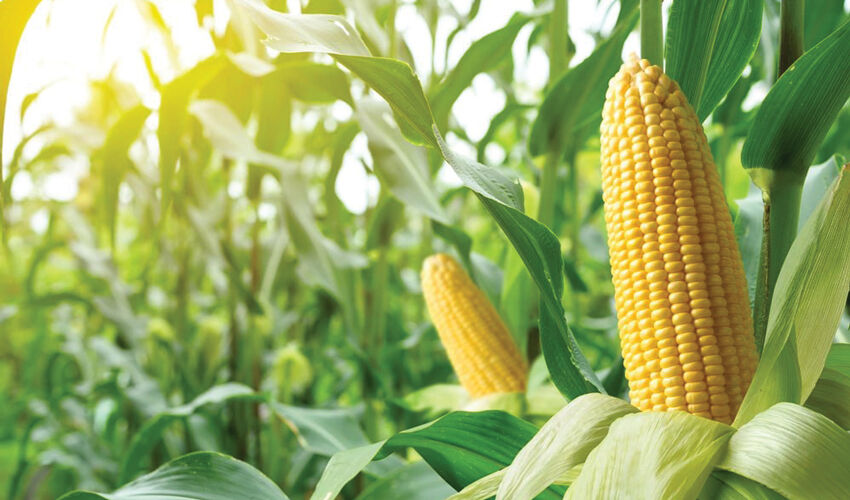
In this regard, specialized media resources of Ukraine note that delays in the harvesting campaign due to rains force farmers of the neighboring country to ship corn directly from the fields to traders. At the same time, the moisture content of grain, with a commercial basis of 14%, in some cases exceeds 25%. Due to the increased moisture content, the quality of commodity products, as Ukrainian experts note, “causes concern: some analyses show mycotoxins, which may affect exports. There is a growing fear among traders that forward contracts may be disrupted in November. Such rumors and situational shortage of supply of goods of acceptable quality for export on the spot market of Ukraine keep corn prices at a relatively high level – $207-210/t (on terms of delivery CPT, fast delivery to the port). This is even slightly higher than prices for new crop wheat.
In Moldova, according to grain market operators, corn harvesting is completed completely or to a large extent only in the southern regions, where less than 15% of all areas under this crop are concentrated (according to NBS statistics, the area under corn in Moldova for harvest-2025 is 414.7 thousand hectares). Whereas in most farms in the central and, especially, in the northern zone of the country, the corn harvest campaign has not even started yet. The reasons are the same as in Ukraine – overwatering of the top layer of soil prevents “entering the field”.
Boris Boincian, head of the Laboratory of Sustainable Farming Systems of the National Center for Research and Seed Production of the Republic of Moldova, notes that the humidity of ripe corn grain is too high at the moment – 18-20% on average. As in the neighboring country, there is a risk of accumulation of mycotoxins in the products.
This week precipitation has stopped in many regions of the country. But in the north of Moldova, in some areas, weak and short-lived precipitation continues, and in the mornings, almost everywhere there are fogs. For this reason, the air humidity is still very high – 80-90%. This prevents drying of corn grain in cobs. Another not obvious but significant problem, from the expert’s point of view, is that late harvesting leaves very little chance that farmers will have time to sow the fields freed up after corn with winter crops. Sowing spring crops, particularly sunflowers, on the corn precursor is also acceptable, but it is not the best option in terms of crop rotation.
However, so far these circumstances do not bother Moldovan farmers too much. First of all, they are focused on the soonest completion of harvesting the 2025 sunflower crop. Warm weather and the cessation of heavy rainfall, which can soak the top layer of soil to a state impassable for agricultural machinery, contributes to the acceleration of the harvesting campaign and reduction of losses on the “last hundred meters”. As a result, if the end of harvesting is not marred by bad weather, the yield of sunflower within 3-4 tons/ha “per round” agricultural producers in the north of Moldova consider a real scenario.
Igor Tagadiuc, director of Agrostoc entrepreneurial cooperative , notes that this year Moldovan producers of oilseeds and grains, at least from some regions of the country, will have time to take advantage of a rare but very pleasant combination of factors: rather high yields and very good prices for agricultural products. The confirmation of this hypothesis is a rather high rhythm of sales of rape, sunflower and, to a lesser extent, wheat, barley and peas in the summer-autumn of this year.
However, prompt harvesting of corn is also in the interest of farmers. At least because corn and wheat are usually used by farmers and traders as a strategic buffer reserve for the second half of the marketing season (i.e., for the first half of 2026).
Weather conditions in the last month of fall, of course, could again slow the pace of the harvest campaign. In addition, corn grain in any case will need processing – drying at elevators, and this will increase the cost of production. In order to avoid the growth of costs, some agricultural producers may decide to make an extravagant production scenario – to postpone corn harvesting to winter (especially since winters in Moldova are snowless for several years) or even to early spring. This has happened before, but it is also a risk, and not justified.
For the period January-September 2025, corn exports from Moldova amounted to slightly less than 22 thousand tons – it is by 5.3% less than the corresponding indicator for the same period of 2024 and by 15.9% less than in 2023. The invoice price of corn exports in the mentioned period of the current year was the same as in the previous year – 3.99 lei/kg on average. However, in September-October, the price of corn of last year’s harvest for export in the country decreased to 3-3.10 lei/kg. This is explained by the fact that traders in the last month of summer and the first month of fall focused on more profitable external supplies of rapeseed. However, in the first half of November, due to the limited supply of commercial corn on the Black Sea market, a “window of opportunity” is temporarily opened for Moldovan corn, but in order to take advantage of it, commercial batches of this product are needed.









